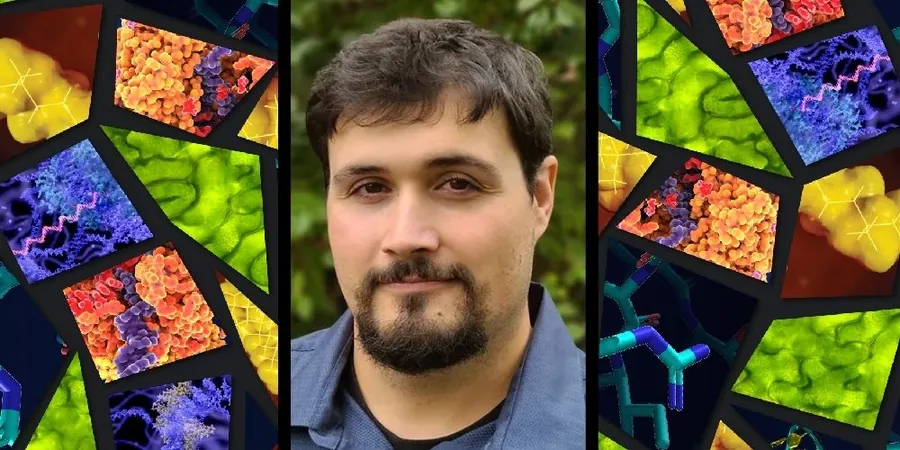
The Golden Revolution in Vaccine Technology: Harnessing Gold Nanoparticles for the Next Generation of Immunization
2024-11-05
Author: Li
The Golden Revolution in Vaccine Technology
In an innovative leap forward, researchers have discovered that coating gold nanoparticles with sugar – specifically carbohydrates – can transform these tiny metallic structures into biocompatible agents, recognized by the body as organic entities. This coating creates a protective layer that not only facilitates their movement through biological barriers but also enables them to deliver drugs and vaccines more effectively. Renowned scientist Thomas Rademacher, founder and CEO of Gylden Pharma, refers to these highly engineered particles as "quantum clusters" or "artificial atoms," with sizes around 5 nanometers. This minuscule scale enables them to function differently compared to traditional gold.
Implications for Drug and Vaccine Development
So, what does this mean for the future of drug and vaccine development? The primary advantage of using gold nanoparticles lies in their ability to shield sensitive payloads, such as RNA and peptide-based vaccines, from being degraded by enzymes within the body. This protective framework, akin to a fortress for fragile molecules, allows these nanoparticles to traverse through the skin and other biological barriers and be safely excreted from the body. The introduction of microneedle technology further aids in delivering these nanoparticles effectively via skin patches, a revolutionary method for vaccination.
Enhancing Immune Response
But how do these gold nanoparticles enhance immune response? Rademacher emphasizes the importance of targeting immune responses through the skin, where many immune cells reside, rather than through traditional injection sites like muscles. The nanoparticles can be engineered to mimic the surface patterns of live pathogens, effectively tricking the immune system into mounting a robust response as if it were reacting to a genuine infection. This pioneering approach represents a substantial leap in bioengineering, particularly for vaccine development and precision drug delivery.
Addressing Global Health Threats
One of the primary areas Gylden Pharma is focusing on are some of the world's most dangerous pathogens, such as Ebola and Zika virus. While the world may not always be in immediate need of a Zika vaccine, the potential exists for future outbreaks; hence, developing and having these vaccines stored in readiness is crucial. Their technology has notably expanded the scope of vaccine development beyond what major pharmaceutical companies might consider, particularly for economically challenging vaccine candidates.
As the threat of diseases like dengue becomes increasingly real – with about half the global population at risk due to mosquito transmission – the urgent need for feasible vaccines has never been greater. A previous vaccine, Dengvaxia, faced scrutiny and was ultimately pulled from the market, leaving a significant gap in preventative measures against dengue. Gylden Pharma's approach hopes to counter this gap by developing safe, effective vaccines.
Clinical trials are already underway in Switzerland for both SARS and dengue vaccines. Additionally, the company is set to launch trials in Brazil and other South American regions where the danger of dengue is palpable. Beyond this, their groundbreaking technology enables rapid vaccine development, including synthetic versions of traditional vaccines such as those for yellow fever and polio. By eliminating the need for needle injections, this technology seeks not just to enhance effectiveness but also improve vaccination experiences for the public.
Navigating Regulatory Challenges
Despite the pressing need for vaccines, regulatory frameworks often lag behind emerging health threats. Rademacher reflects on the stark reality of public health priorities. In areas like the Dominican Republic and Puerto Rico, where dengue looms as a recurrent threat, the system does not seem to respond swiftly enough to developing vaccination solutions. This stagnation raises concerns about the overall preparedness for emergent health crises.
Interestingly, the technological advancements made by Gylden Pharma have illuminated a path toward preparing for future pandemics. The firm has dedicated itself to creating a repository of vaccines for high-risk pathogens that could become relevant in the event of an outbreak. Historical patterns suggest that influenza pandemics are often preceded by outbreaks in animals, such as horses, thus strategic preparation is imperative.
The dual-functionality of the vaccine technology, capable of triggering a specific type of immune response, could redefine how diseases are tackled. Traditional vaccines often hinge on antibody production, but Gylden's approach focuses on cellular immunity, leading to long-lasting protection. In addition, the possibility of using skin patches eliminates many logistical challenges tied to needle disposal and vaccine delivery.
Looking to the Future
The future of vaccine technology, particularly in light of the lessons learned during the COVID-19 pandemic, emphasizes the need for targeted immunization strategies. High-risk populations, such as young children and the elderly, often bear the brunt of viral infections, reaffirming the necessity for focused vaccination efforts.
Rademacher expresses optimism regarding the potential impact of their skin patch vaccines. The adaptability of this technology signifies a promising avenue for both immediate health responses and long-term pandemic preparedness, transforming how we approach immunization against a myriad of infectious diseases. As global health challenges evolve, innovations like these gold nanoparticles may very well be at the forefront in revolutionizing vaccine distribution and effectiveness.
Stay tuned for more updates as Gylden Pharma progresses in its mission to protect global health and save lives through groundbreaking technological advancements in vaccination.




 Brasil (PT)
Brasil (PT)
 Canada (EN)
Canada (EN)
 Chile (ES)
Chile (ES)
 España (ES)
España (ES)
 France (FR)
France (FR)
 Hong Kong (EN)
Hong Kong (EN)
 Italia (IT)
Italia (IT)
 日本 (JA)
日本 (JA)
 Magyarország (HU)
Magyarország (HU)
 Norge (NO)
Norge (NO)
 Polska (PL)
Polska (PL)
 Schweiz (DE)
Schweiz (DE)
 Singapore (EN)
Singapore (EN)
 Sverige (SV)
Sverige (SV)
 Suomi (FI)
Suomi (FI)
 Türkiye (TR)
Türkiye (TR)